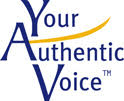
It’s a tale as old as time. As the company or department leader, you hire an employee to fulfill certain job requirements. At some point, that employee’s work starts to deteriorate, and worse yet, they don’t seem to care. How do you call this to their attention without making things worse, especially if you fear losing the employee? What do you say?
As an authentic leadership coach and trainer, I’ve heard this story a number of times. I know misery does not love company! To address those difficult conversations, you can depend on the principles and processes of Nonviolent Communication.
“Nonviolent communication shows us a way of being very honest, without criticism, insults, or put-downs, and without any intellectual diagnosis implying wrongness.” Marshall Rosenberg
Marshall Rosenberg created this method of communication to facilitate a compassionate outcome, especially during times of conflict. He described “violent communication” as a way of communication that results in hurt or harm. These can include:
- Bullying
- Racial bias
- Blaming
- Finger pointing
- Name calling
- Reacting when angry
- Discriminating
- Criticizing
- Getting defensive
- Judging
I hadn’t thought of these forms of communication as “violent” prior to working with Nonviolent Communication, but now I do! As someone who does not choose to be violent, it made sense to me to find another way to share my concerns. Having a template made it easier to organize my thoughts. In a snapshot, here are the steps to communicate using Nonviolent Communication:
To prepare for a difficult conversation:
- Give yourself empathy, because you’re human! I feel _____ in this situation because _____.
- Give the other person silent empathy, because they are human! Imagine what the other person might be experiencing: I feel _____ in this situation because _____.
To express your concerns clearly:
- Make an observation: When you . . .
- Share your feelings: I feel, or my gut response to this is . . .
- Share your need: Because I’m needing, or what’s driving this is . . .
- Make your specific request: My request is, or the first step I’d like to take is . . .
When you want to make sure you understand the other person’s concerns:
- Make an observation: When you . . .
- Guess what they are feeling: What’s your gut response? What do you feel?
- Guess what their need is: What matters most to you on a core level? What are you needing?
- Ask what specific action they’d like: What’s one step that will move this forward?
Communicating in this way does three things: it removes or significantly reduces feelings of blame, shame and guilt for both people; empowers you to express or listen without judgment; and requires each person to be accountable for their own experience.
One of the wonderful outcomes you’ll discover by using this method is the trust it creates. You’re making an observation based on facts, not evaluating or judging someone’s character. You’re bringing empathy into the conversation. You’re acknowledging and anchoring your communication in your shared humanity.
Often, this is how we communicate instead:
- Advise – I think you should
- One-up – That’s nothing, wait until you hear
- Educate – This could turn into a very positive experience
- Console – It wasn’t your fault
- Tell a story – That reminds me of the time
- Shut down – Cheer up. Don’t feel so bad
- Sympathize – Oh you poor thing
- Interrogate – When did this begin?
- Explain – I would have called but
- Correct – That’s not how it happened
Do you recognize any of your favorites? I don’t know about you, but I haven’t found these techniques to be that helpful. In fact, they often backfire.
So, next time you’re faced with an employee who isn’t pulling their weight, or creating difficulties in the office, consider using Nonviolent Communication. It takes practice, so start small. One thing’s for sure — it’s far better to communicate compassionately than avoid the conversation and delay the inevitable. It might take some courage. The rewards of clarity, respect and trust are worth it. If I can support you, I’d love to!

Leave A Comment